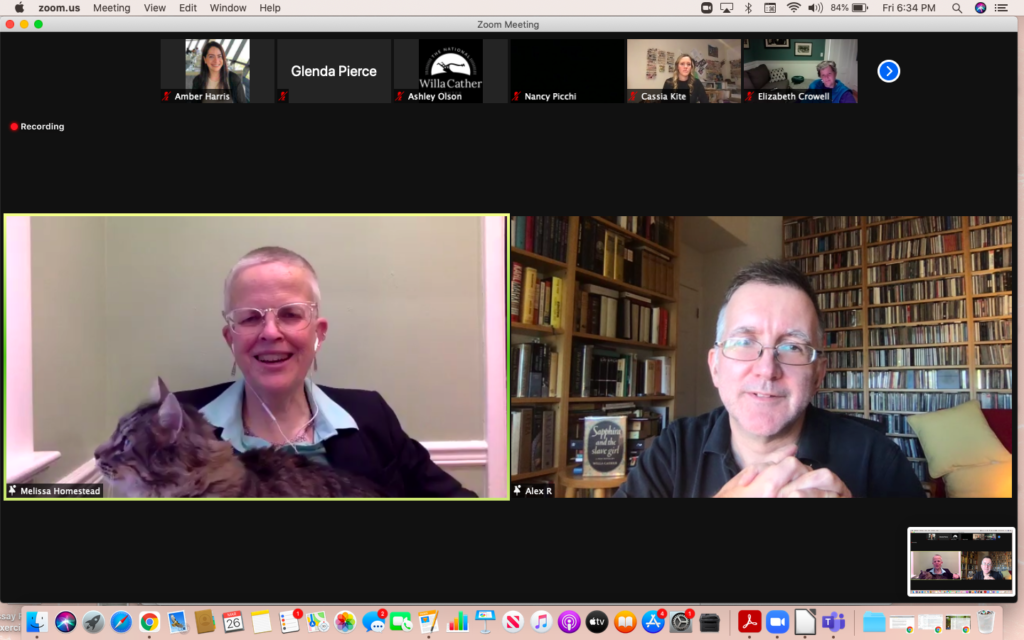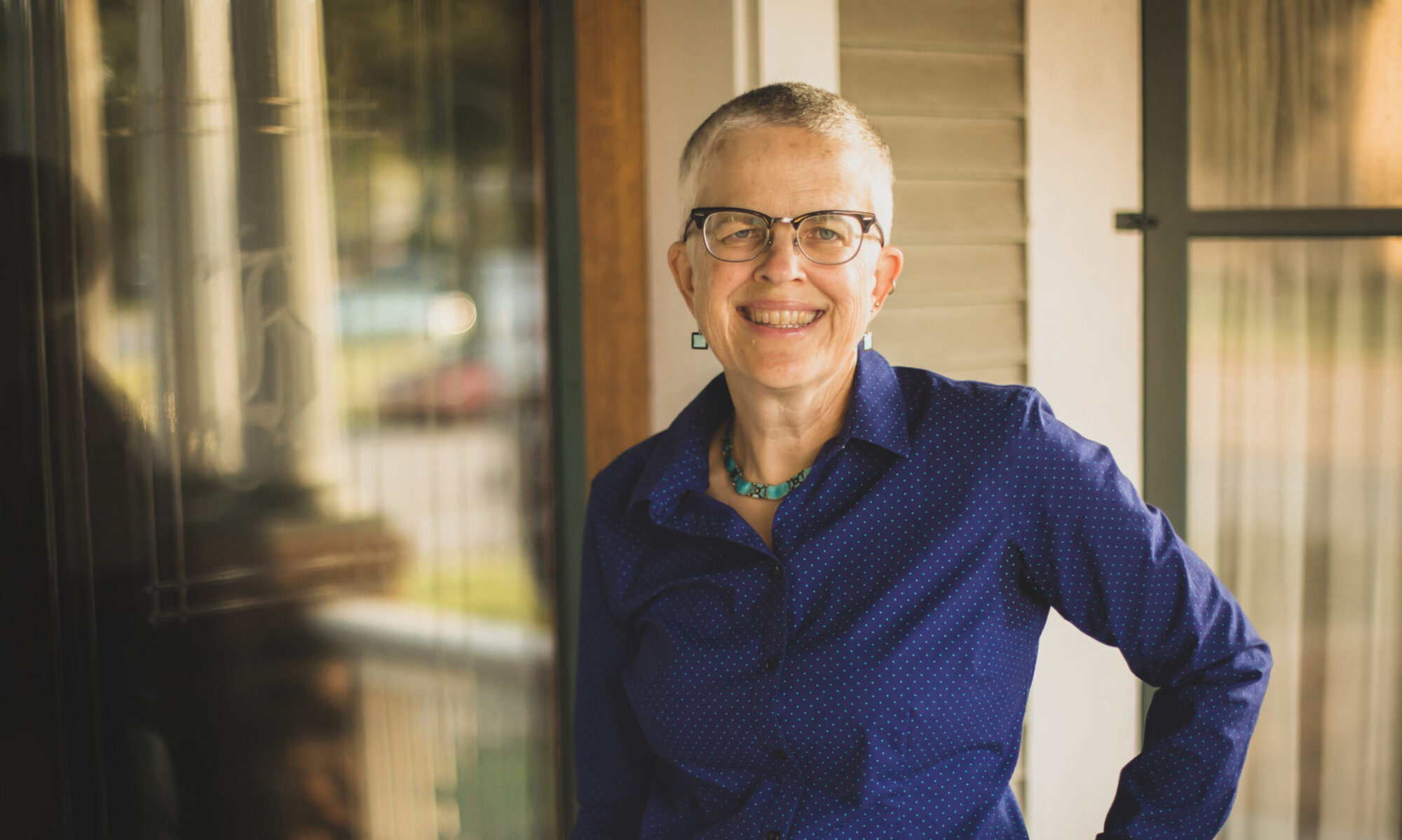Yes there are. I’ve mostly had four cats and two dogs during all the time I was working on The Only Wonderful Things: The Creative Partnership of Willa Cather and Edith Lewis, and I’ve adopted several old dogs, which means lots of turnover. Let me introduce them in order of their adoption.
Isobel, adopted 1988, Morris Animal Refuge in Philadelphia; died 2008 in Lincoln, NE. Isobel was my second cat, and she lived at an incredible number of addresses in Pennsylvania, Alabama, Massachusetts, Oklahoma, and Nebraska. She was fully 20 years old when she died, although she didn’t quite make her 20th adoption anniversary.
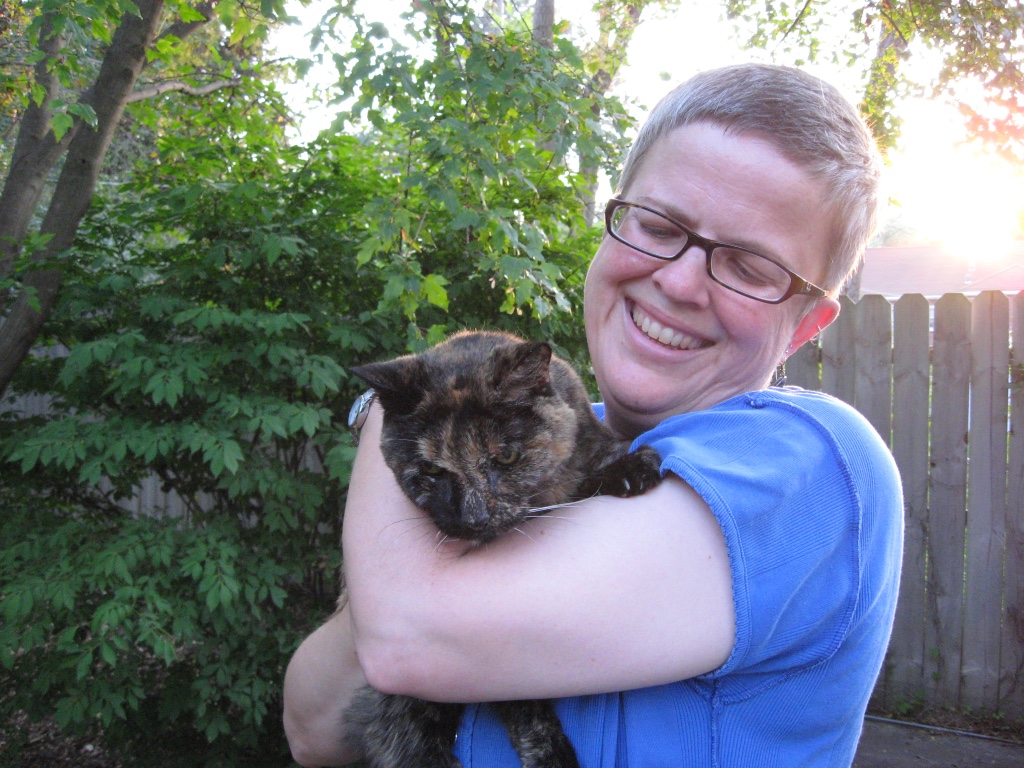
Gracie, adopted Morris Animal Refuge, Philadelphia, 1993, died 2006, Lincoln, NE. She was part of my multiply-moved, multi-state Morris crew, although no one could match Isobel’s record. Here she was in Oklahoma, learning about the backyard.
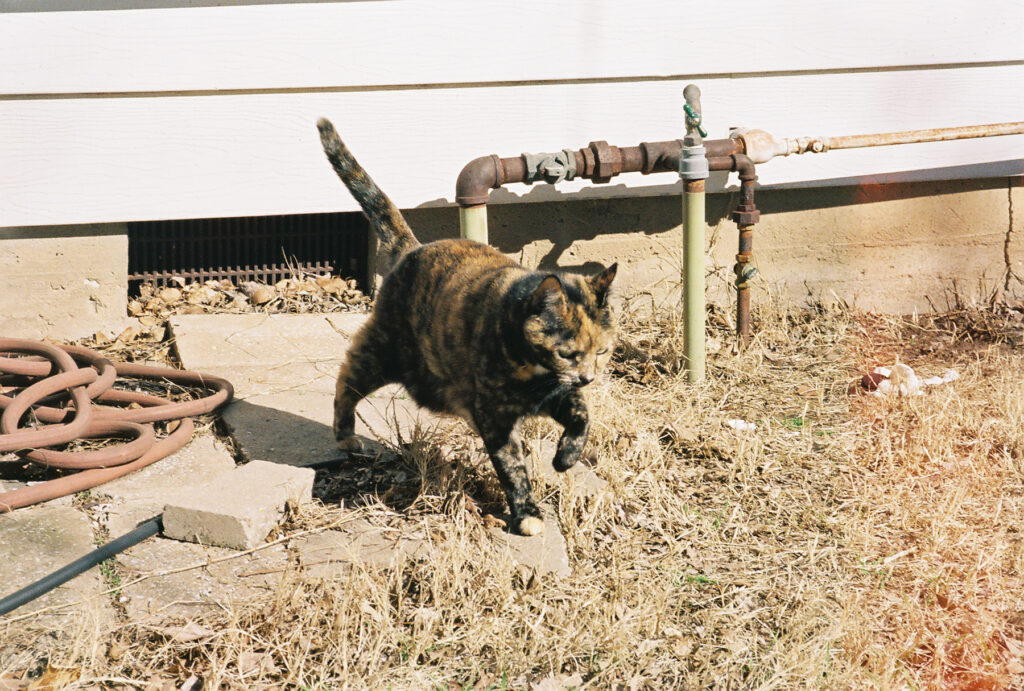
Betty, adopted 1995, Morris Animal Refuge, Philadelphia, died 2006, Lincoln, NE. Betty (on the right) was a cat of size (22 pounds at her biggest) and had a very sweet temperament.
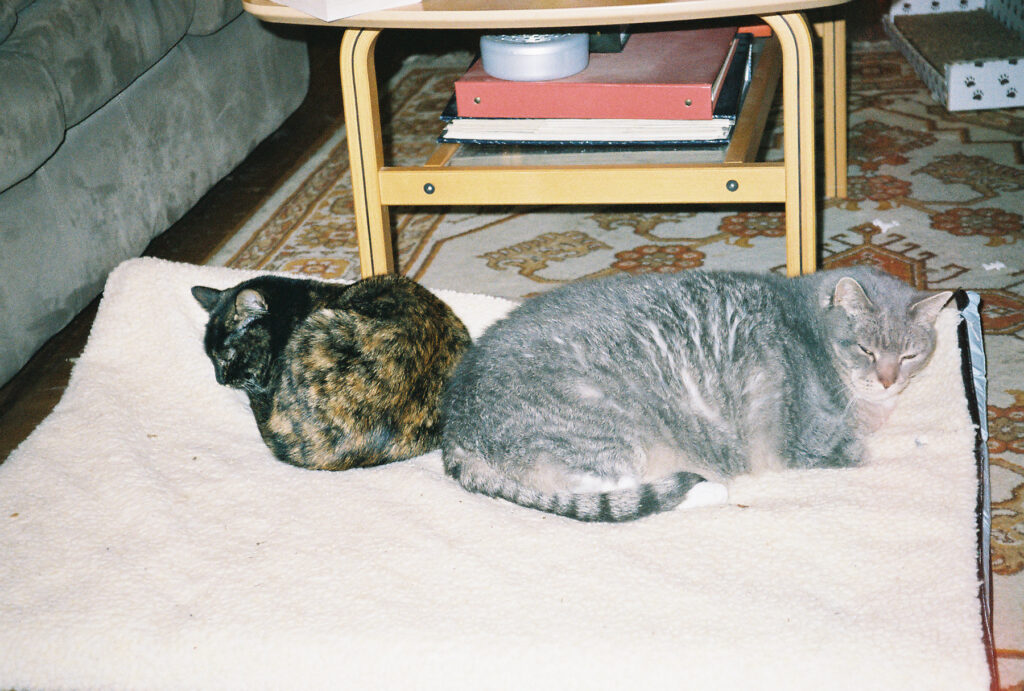
Ingeborg, taken in off the streets of West Philly by one of my grad school classmates in 1998, died 2005 in Norman, OK. I have some great pictures of her, but, alas, they have never been scanned.
Brownie the Dog, adopted 2002, Second Chance Animal Sanctuary, Norman, OK, died 2004, Norman, OK; and Marjorie the Cat, taken in off the streets of Norman, 2002, disappeared, Lincoln, NE, 2011. They were different species, and there was a 13-year age difference between them (Brownie was 13 years old when I adopted her), and yet they were soulmates. Brownie was BEST DOG EVER, as even my later dogs would have to concede if they met her. Marjorie remained a semi-feral stone-cold killer.
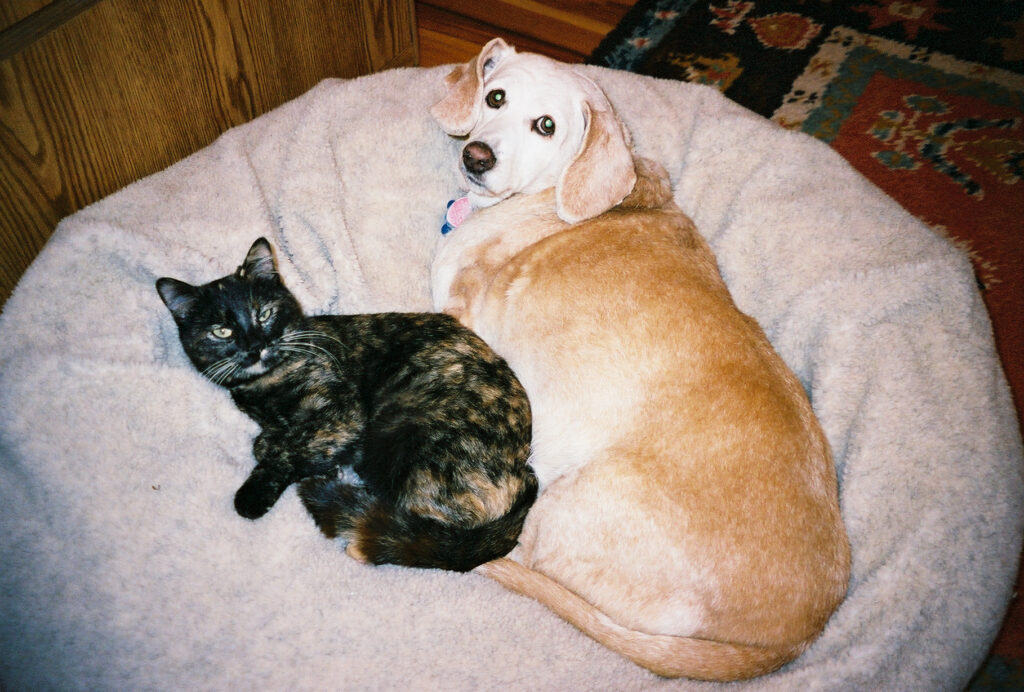
Florence the Low Rider Mutt, adopted 2004, Ahimsa Rescue of Muldrow, OK, died 2011, Lincoln, NE; and Helen the Hound, adopted 2004 from Ozark Mountain Basset , died Lincoln, NE, 2014. The dynamic duo. Helen was inconsolable when Florence died. She tolerated Laci Basset, but it wasn’t the same.
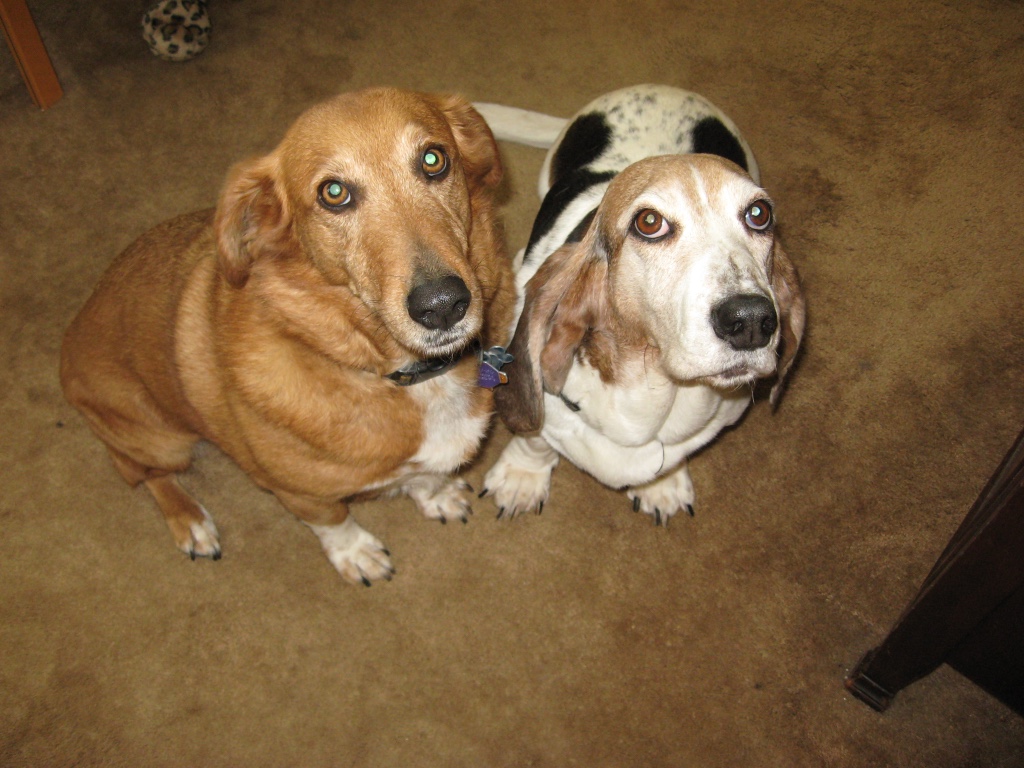
Magnus, dumped as a kitten on a colleague’s farmette in 2006, died in traffic, 2007. He was never fully domesticated, so there was no keeping him close to home. Alas, that’s why he died so young.

Tom Cat, adopted 2006 from the Capital Humane Society, died 2015. He was a stunted adolescent when I adopted him because he had IBD, and he remained a tiny little man to the end. He was too fond of lounging in front of and in back of cars on pavement (although that’s not how he died–it seems the IBD took him).
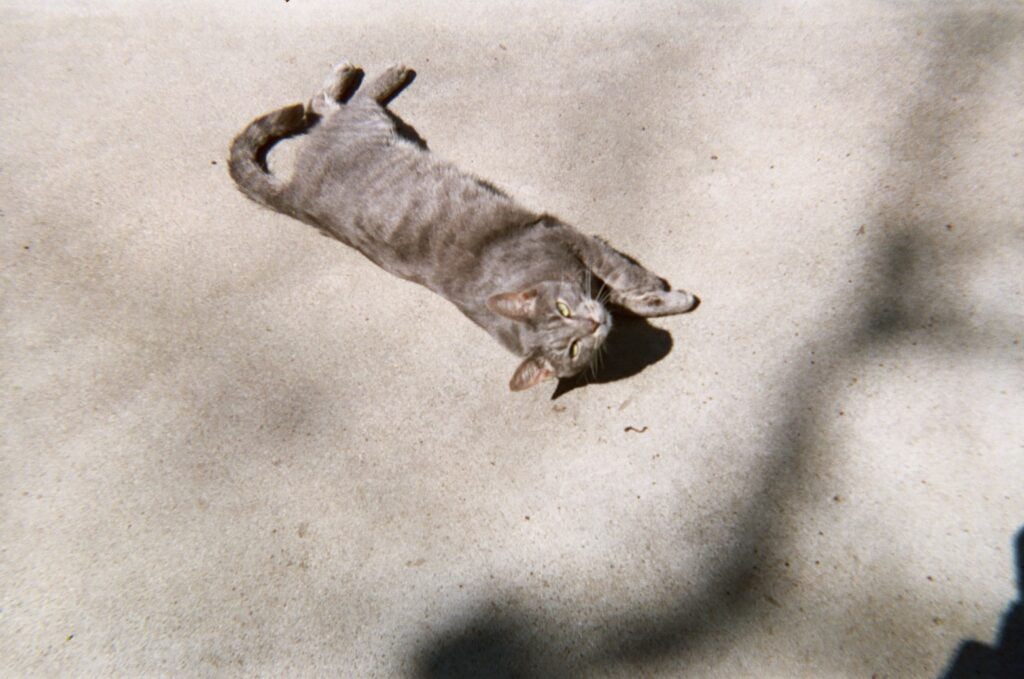
Bessie, adopted 2008 from the Capital Humane Society (I met her the same day Isobel died), and she’s still with me, often sitting on my shoulder while I work.

Annabelle, adopted 2008 from the Capital Humane Society, and still with me, being a pain in the ass. She and Bessie have hated each other for nearly 13 years now.
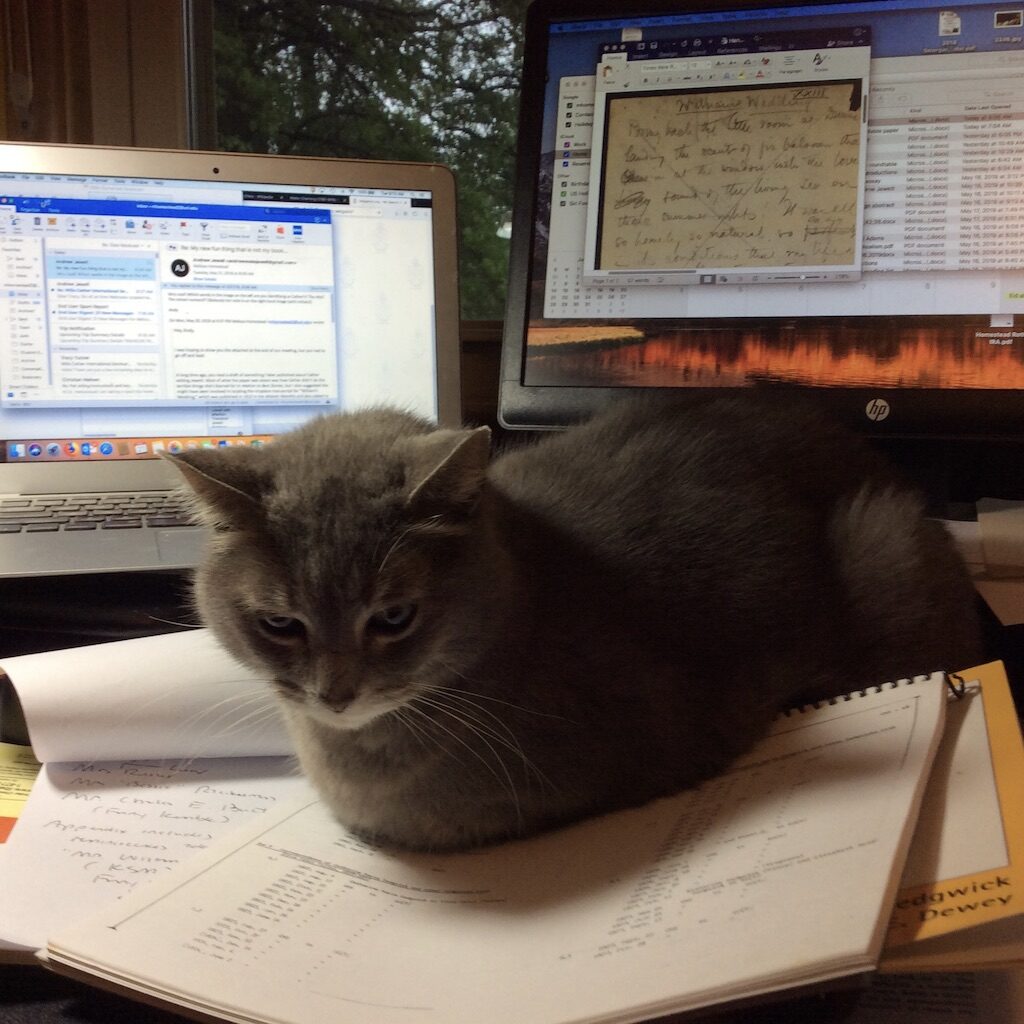
Laci Basset, adopted from the Nebraska Humane Society in 2011 at age eight, surrendered by an older woman in poor health, died 2015. Laci had a very sunny disposition, unless she was competing for food, then she became a wolf.
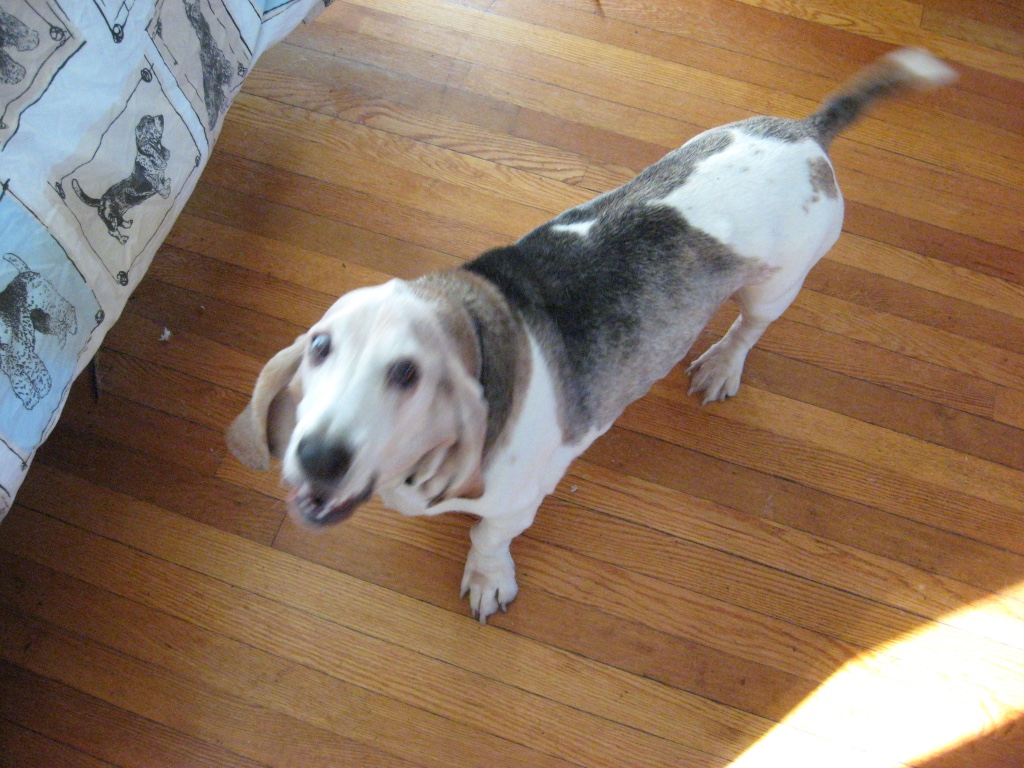
Simon the Hound, adopted from Hound Haven Basset Rescue in 2015 and still with me. Simon is a very grumpy old toothless man, and I love him. He’s on his third consort–quite the lothario–but Tessa Basset was his true love. He is currently sixteen years old and will walk for miles. Here he is in 2019 with my complete book manuscript.
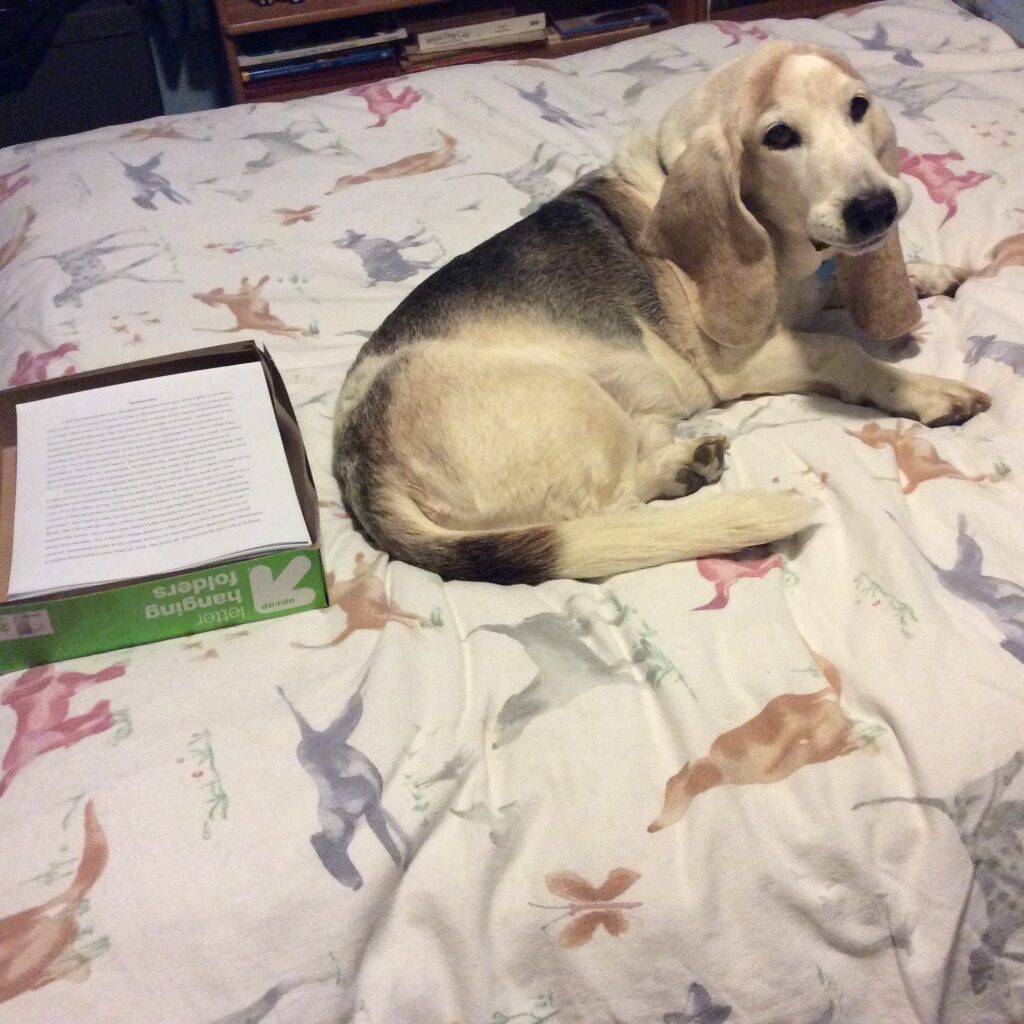
Tess Basset, adopted 2015 from the Nebraska Humane Society in Omaha, died 2017, leaving a huge hole in Simon’s heart. Basset pillow display courtesy of my catalog-shopping mother. Tessa died two weeks before my mom died.

Roberta Basset, adopted from Hound Haven Basset Rescue in 2017, not long after Tessa Basset died and a few days before my mom died. I named Roberta after my mom’s sister. Roberta has the best side-eye and the most freckles of any of my bassets. And even though she was found running stray in rural Missouri, she is a fan of the easy life.

Bob and John, adopted 2019 from the Capital Humane Society. I had been down to two cats for a while, and I planed to keep it that way, but then a hoarder surrendered a whole colony of 84 cats, and BOOM, the floofy gentlemen came home with me. They aren’t littermates, but considering that the entire colony descended from one breeding pair, they might as well be. John can be distinguished by his white bib and boots. They broke up Annabelle’s reign of terror over Bessie.
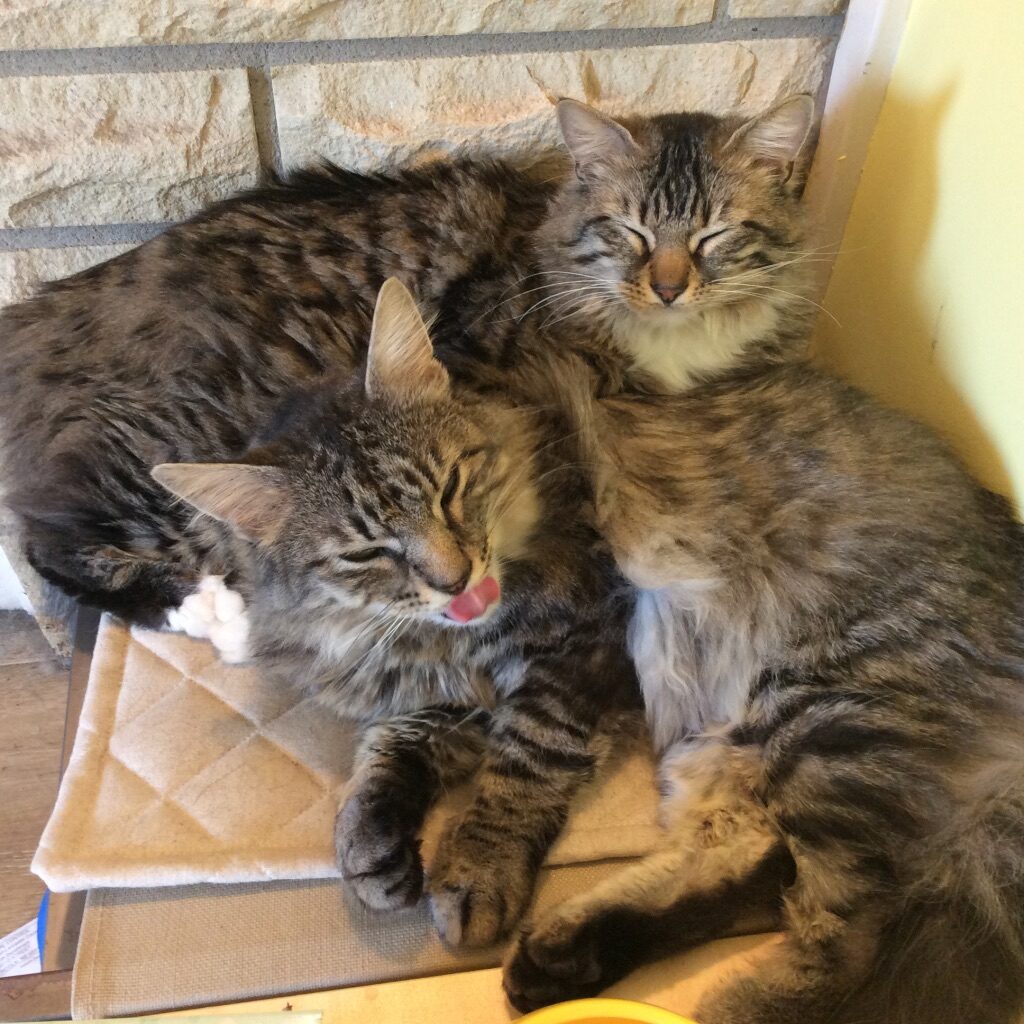
BONUS, screen shots of all of my current cats Zoom bombing my first virtual book event, a conversation with Alex Ross.
Bob has things to say to Alex

Bessie’s butt.
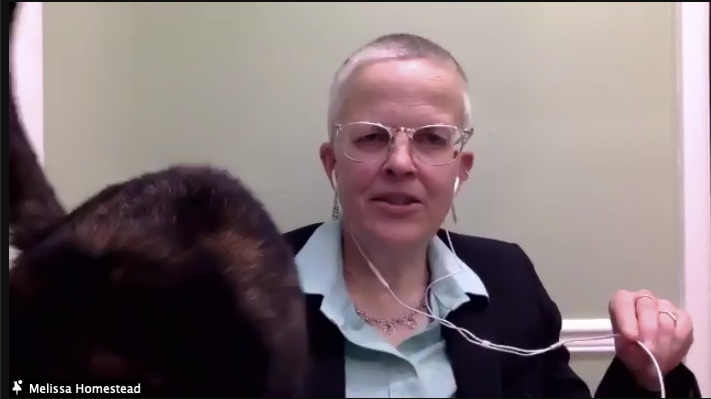
Annabelle is mad she can’t get into my water because it has a lid on it (that was intentional)

John is interested in what’s out the window, not my book.
